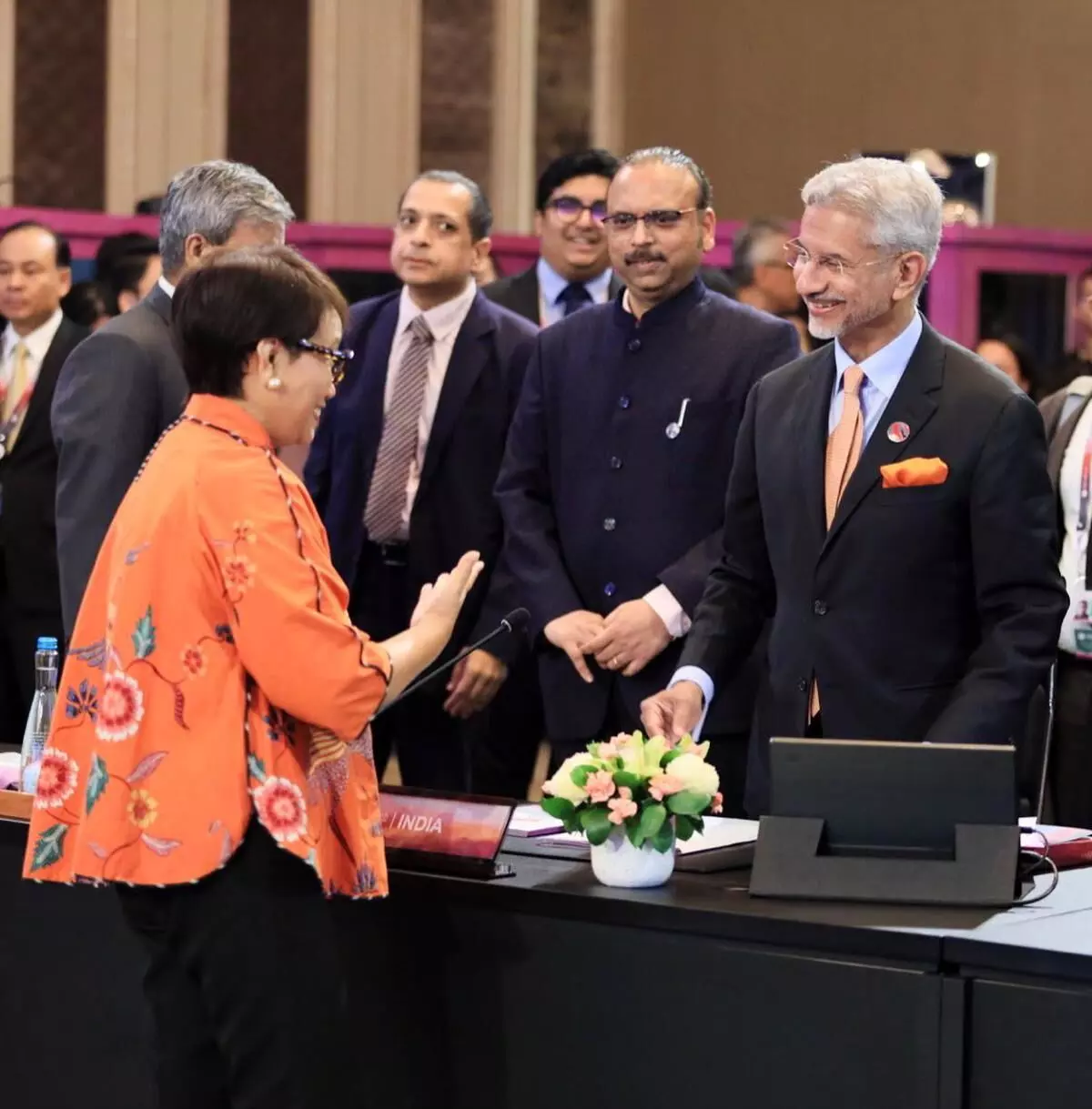Formidable, but fragmented

The joint communique of the 56th ASEAN Foreign Ministers’ Meeting — held on July 11-12 in Jakarta — reaffirmed the grouping’s commitment to strengthen itself as an “organisation that is robust and agile, and equipped with strengthened capacity and institutional effectiveness to address today’s challenges and to remain credible and relevant for its people, the region, and the world”. Under the theme of ‘ASEAN Matters: Epicentrum of Growth’, the host Indonesia highlighted the obvious centrality of the region but failed to ease the ongoing rifts and divergences within and outside the grouping. Founded on August 8, 1967, following the Bangkok Declaration, ASEAN is a regional intergovernmental organization that promotes cooperation and integration among its member countries in Southeast Asia. The 10-member bloc — consisting of Brunei Darussalam, Cambodia, Indonesia, Lao People's Democratic Republic (Laos), Malaysia, Myanmar (Burma), the Philippines, Singapore, Thailand and Vietnam — plays a crucial role in promoting peace, stability, and prosperity in the Southeast Asian region. Moreover, it has attracted participation from some of the most formidable nations across the world — making it a hotbed of contestations. The annual survey by Singapore’s ISEAS-Yusof Ishak Institute revealed that China has been the most influential power in the grouping, but its strategic power declined from 54.4 per cent last year to 41.5 per cent in 2023. The influence of the US, on the contrary, has been on the rise. The strategic power of the United States in ASEAN grew from 29.7 to 31.9 between 2022 and 2023. In terms of approval, India’s score improved from a mere 5.1 per cent to 11.3 per cent during the same period. While India’s rising clout in the regional grouping is an encouraging sign, the increasing competition between the two global rivals — China and the US — is most likely to render the grouping ineffective to a considerable degree by creating internal divisions. As of now, China enjoys clear dominance in terms of control. While countries like Laos, Cambodia and Myanmar depend extensively on China, other member nations of ASEAN — including Indonesia, Malaysia, Singapore and Thailand — also share close, positive ties with the Asian giant. It must be pointed out here that China’s overwhelming influence in the grouping has been a major stumbling block in the formulation and enforcement of code of conduct in the South China Sea. Neither the monopoly of China nor the duopoly created by the rising influence of the US is good for the growth and functioning of ASEAN. One can expect positive outcomes only through two developments — unity among all the ASEAN members and diversification of the influence to trusted players like India and Japan, among others. These nations must ensure their actively positive engagement in the regional grouping. As the global power centre shifts from Northwest to Southeast, the centrality of the ASEAN must be given due emphasis. This is too big a leverage to be wasted. While the foreign minister of China could not participate in the FMM, India’s External Affairs Minister S Jaishankar made his presence felt through active engagement. He rooted for a “strong and unified” ASEAN. Jaishankar also hoped for convergence between ASEAN Outlook on the Indo-Pacific (AOIP) and India’s Indo-Pacific Oceans Initiative. However, the unity in ASEAN remains elusive as of now. Apart from divergences between non-ASEAN parties like the US and China, rifts have also surfaced between certain member states on the approach towards dealing with the violence-hit Myanmar. The differences became starkly visible after Thailand attempted to engage with Myanmar’s ruling Military Junta, despite a ban placed by ASEAN members. As far as convergence between AOIP and India’s Indo-Pacific Oceans Initiative is concerned, the enforcement of the former, in the very first place, remains clouded. It may be noted that AOIP was introduced by ASEAN in June 2019 as a framework to guide the organization's engagement and cooperation with various countries and regional blocs in the Indo-Pacific area, which doesn’t go well with China. In summation, it can be said that the centrality of ASEAN is plagued by internal-external fragmentations and concentrated dominance of certain players. Unity and active participation of important stakeholders is necessary to make ASEAN’s centrality count.



